Originally found in freshwater ponds and streams in Southeast Asia, betta fish are known for their feisty nature, bright colors, and flowing fins. Also known as Siamese fighting fish or labyrinth fish, betta fish are highly popular with aquarium hobbyists. Read on for more betta fish facts.

Physical Description
You might be surprised to learn that wild betta fish are usually a dull brown and green color. Only when threatened do they exhibit the brighter colors you associate with betta fish. Wild betta fish also have short tails to present less opportunity for predators and other betta fish to target. Wild betta fish also have shorter fins, allowing them to swim faster than their long finned captive counterparts.
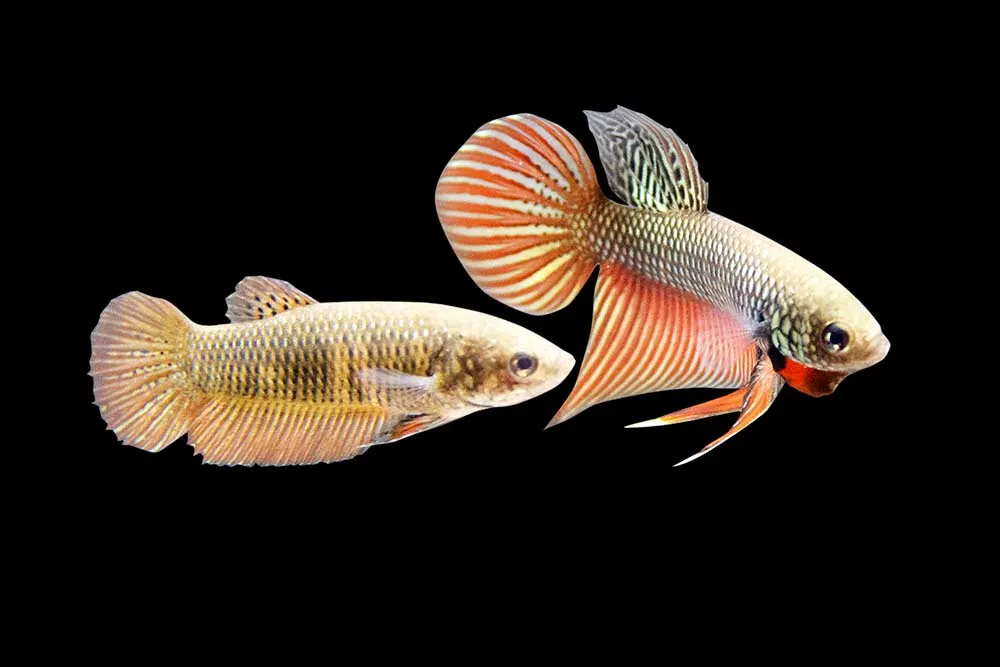
The adult betta fish grows to 2-3 inches in length. They are known for having bright colors, long fins and flowing tails. Betta fish will become larger and more vibrantly colored the better they are taken care of. Most captive betta fish are multi-colored and patterned, though you can find the rare single-colored betta fish. Betta fish are often a combination of red, purple, blue and white with a marbled or grizzled pattern.
Habitat
Betta fish are native to the Mekong river basin in Thailand, Laos, Vietnam, and Cambodia. But they are primarily found in Thailand’s Chao Phraya river. They are found in rice paddies, drainage ditches, flood plains, and other standing water sources.
Betta fish prefer water sources with places to hide and explore. They do best in warm water, between 72-86 degrees Fahrenheit. Betta fish are hardy and are able to survive poor water quality better than some fish.
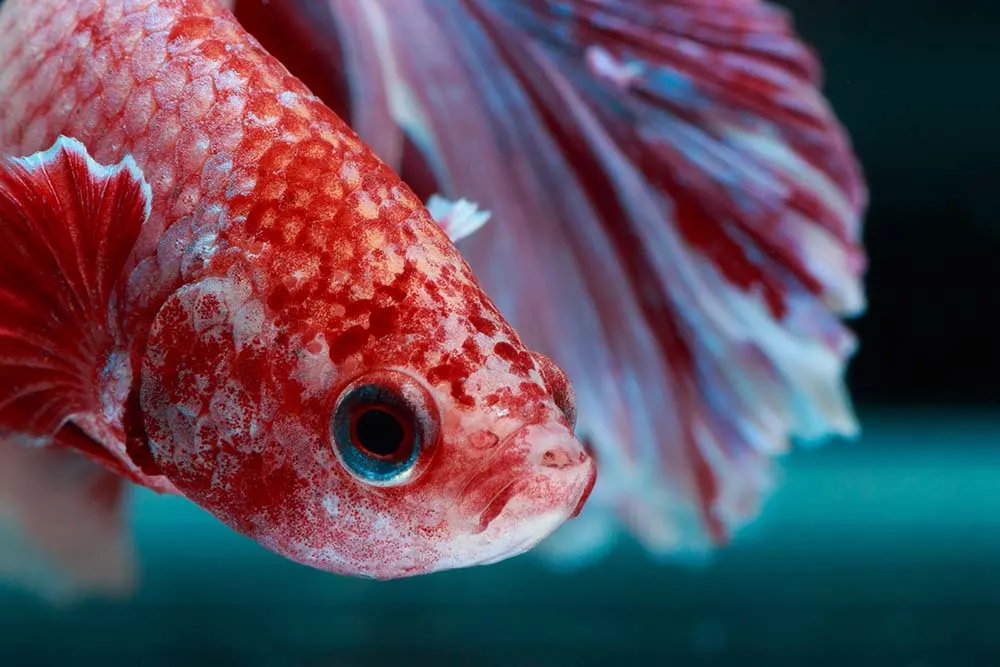
Habits
Betta fish have strong personalities and can be aggressive and territorial, the males more so than the females. Male betta fish are solitary whereas female betta fish may gather in small groups of 5 to 10 fish called sororities.
Male bettas do best with subdued color fish that will not be mistaken for another betta fish. They may attack a fish they perceive as a threat by nipping the fish’s fins.
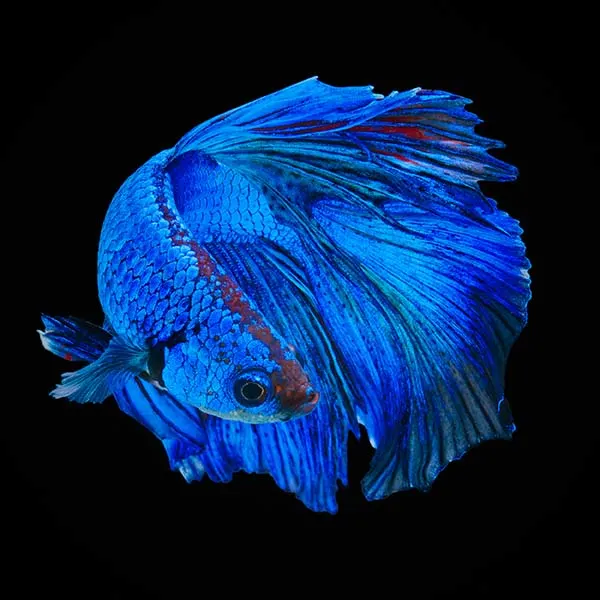
Betta Fish Diet
Wild betta fish are insectivores. They find insects on the surface of the water and aquatic insect larvae. They do not usually eat vegetation.
Betta fish raised in captivity are carnivorous. They eat specially designed betta food flakes and pellets that are fortified with vitamins and protein. It is also recommended to occasionally feed a captive betta fish brine shrimp and bloodworms. Betta fish do not self-regulate their diet so they should not be overfed.
Offspring
Male betta fish do most of the work when it comes to offspring. They will create bubble nests at the surface of the water when ready to mate. The female will release eggs and the male will fertilize them after they are released. The male then collects the eggs in its mouth and spits them into the bubble nest.
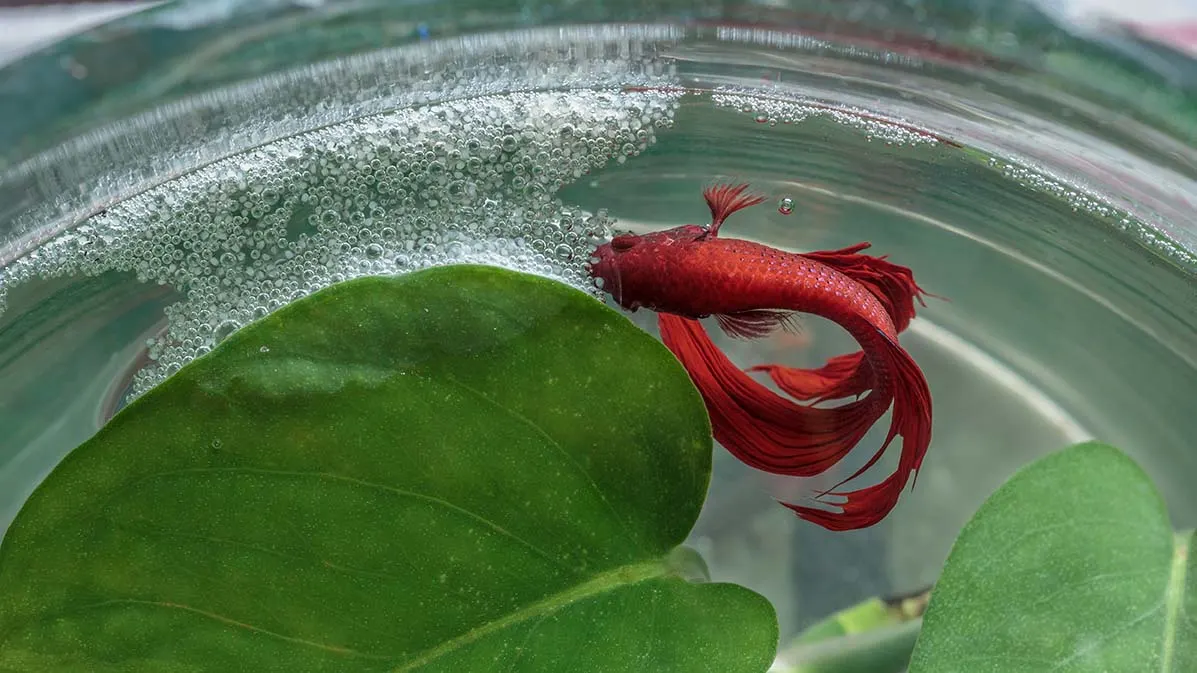
For the next 24 to 36 hours, the male will guard the nest, making repairs as necessary, retrieving eggs that sink away from the nest, and chasing away other fish. Female betta fish may eat the eggs if given the chance.
Fertilized betta fish eggs and newly hatched betta fish are called a fry. Newly hatched betta fish will stay in the nest for a few days, eating the yolk from the sac they were born from. Then they are ready to venture out.
Classification/Taxonomy
Kingdom: Animalia
Phylum: Chordata
Class: Actinopterygii
Order: Perciformes
Family: Osphronemidae
Genus: Betta
Scientific Name: Betta splendens
There are over 70 species of betta fish.
History
In Thailand in the 1800s, people would collect betta fish from fields and puddles and breed them for fighting. Even the King of Thailand had his own fighting fish. This selective breeding has led to the aggressive nature of betta fish we know today. Note – this type of breeding and sport is inhumane and should not be replicated.
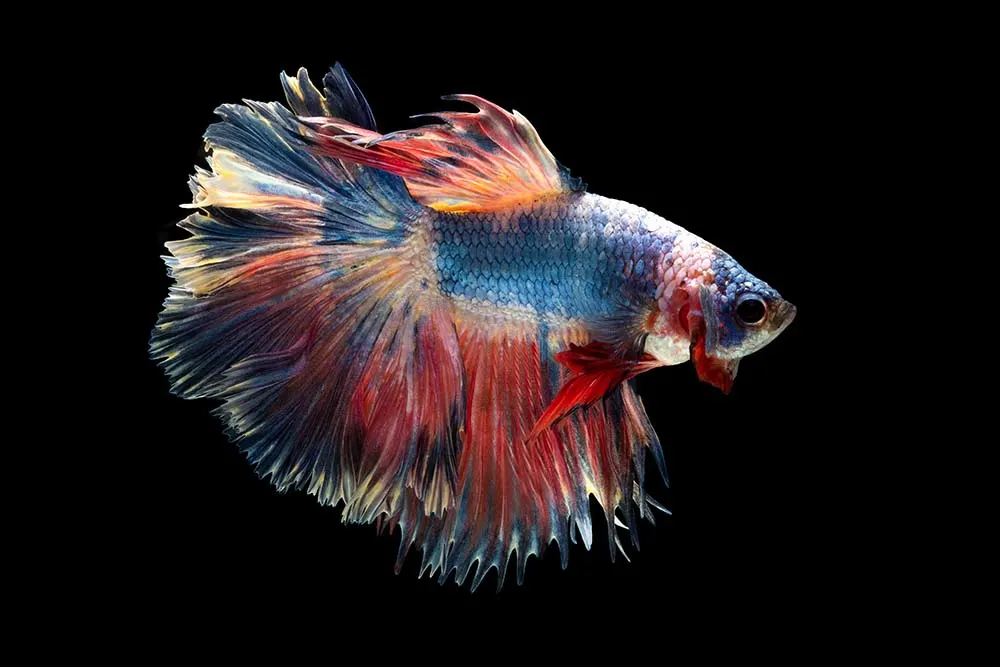
Betta fish were brought to France and Germany in the late 1800s and to the United States by 1910.
Predators
Wild betta fish are vulnerable to predators such as larger fish, cats, newts, salamanders, and birds. But the biggest threat to wild betta fish are pollution and habitat destruction.
Lifespan of Betta Fish
Betta fish live for an average of 3-5 years. Rarely, there are cases of betta fish living 7-10 years.
25 Unusual Facts about Betta Fish
- The Siamese fighting fish was named as Thailand’s national aquatic animal in early 2019.
- Male betta fish can be so aggressive, that even holding a mirror or a picture of another male betta fish up to the tank can result in an attempted attack.
- When a male is ready to breed, it may build a bubble nest even if no females are around.
- Female betta fish are less colorful than the males.
- Betta fish get their name from an ancient clan of warriors that were called the “Bettah.”
- When betta fish fighting was popular in Thailand, the spectators would bet on the fish for its bravery rather than the damage it could inflict.
- Short finned betta fish are sometimes called “plakat” from the Thai word pla kad, which translates to “biting fish.”
- Betta fish have a special organ, called the labyrinth organ. The labyrinth organ allows them to breathe air at the water’s surface and allows them to survive in waters with low oxygen content.
- Betta fish can be hybridized between their species.
- Betta fish are fast learners and can be trained using food rewards, like a dog.
- Betta fish are the second most popular fish to keep as a pet, behind the goldfish.
- They have very tiny sharp teeth to break down their food before ingestion.
- Betta fish can live up to 14 days without food.
- Betta fish can regrow fins if they are damaged from fighting or fin rot.
- They can and do jump out of the water.
- If a betta fish becomes bored, it may start biting its own tail. It is recommended that betta fish owners occasionally switch up the tank décor and plants.
- Betta fish may develop stress lines which are horizontal lines across their body if stressed or sick.
- They may develop vertical lines when feeling aggressive or during mating.
- Betta fish sleep with their eyes open.
- Their fins contain nerve cells and even taste buds.
- A betta fish’s stomach is about the same size as its eye.
- Betta fish have an internal organ called the swim bladder that allows them to regulate their depth by inflating and deflating the bladder with gas.
- When feeling threatened, betta fish will flare their gill cover and release their operculum, which looks like a black beard.
- Betta fish jaws are more powerful than a great white shark, in proportion to their size and power.
- Wild betta fish conservation status is Vulnerable due to its declining population. Without conservation efforts, the wild betta fish will become endangered.
Want to read more about other fish? Check out these posts!
